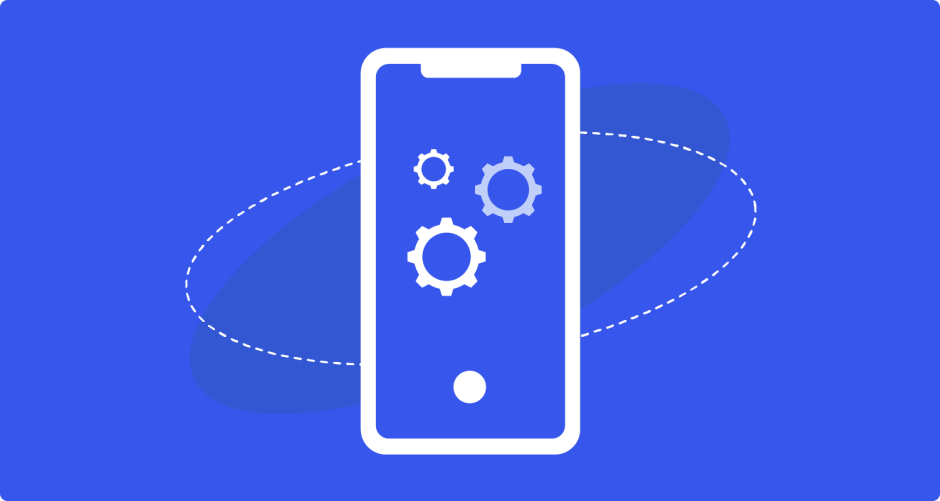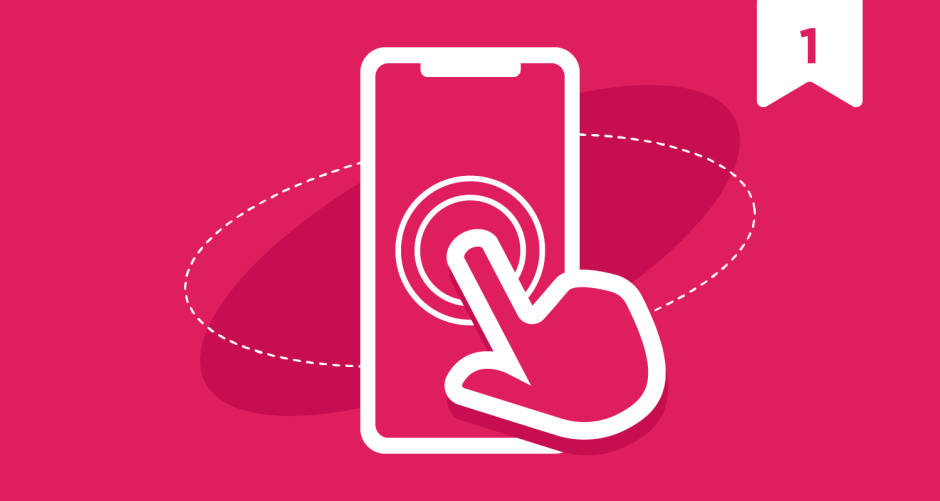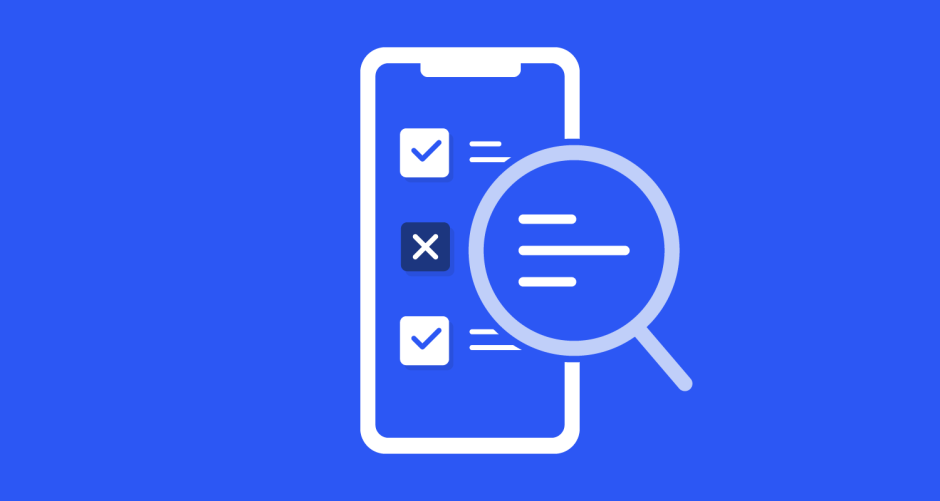Table of contents
Mobile application industry
The mobile industry is growing every year. According to research, it is estimated that users spent $133 billion on mobile apps and games in 2021. This is an increase of almost 20% on the previous year. The App Store and Google Play rankings are dominated by social, service, messaging and gaming apps. The total number of downloads for the entire previous year was 143.6 billion.
This shows that, despite a slight slowdown in the mobile industry due to a lack of components, we are more willing to download applications and spend an increasing amount of money on them.
This translates largely into the production of new apps. Many investors have noticed the potential of the mobile industry and are increasingly willing to invest their money in it and, consequently. the demand for IT employees, including mobile QA engineers, is growing.
The mobile app industry is strong, but where are the Mobile QA engineers?
Despite the fact that all signs in the sky point to the greater popularity of the mobile industry, it is still difficult to find a tester who specializes in it. Specifying the reason for this is not difficult. Nowadays, there are several myths (you can read more about it here “Facts and Myths About the Quality Assurance Industry“) that are propagated by various courses and articles, misleading many testers, including both beginners and advanced alike.
So before you decide to spend a lot of money on various courses, please read this article. I am sure it will help you to plan your development and take the first steps in becoming a Mobile QA Engineer.
What does a Mobile QA Engineer job look like?
As well as ensuring product quality, working on processes and documentation, you will work on mobile devices, i.e. smartphones, tablets and smartwatches.
Familiarity with these is essential; you need to know how to use a given device, and often in a way you’ve never used it before. What exactly is involved? It includes, for example, the device’s developer options, which often make our work easier.
They allow us to debug and install apps using Android Studio or Xcode, track movements, limit internet speed and many, many other settings to streamline testing. If you have knowledge on how to run such options on your device, this is already a big plus at a recruitment interview.
Your desk will be loaded with a fair number of devices running different systems.
As you probably have heard, there are two main operating systems for mobile devices, Android and iOS. In addition to this, these systems have many different versions. You need to be aware that, to cover as many test cases as possible, you need to test your app on both systems and on different versions of these systems. Sometimes a small update to Android or iOS can break the app and your team will have to fix the bugs.
It is rare for an app to be developed for only one version of a system, for the simple reason that, in the device market, not everyone has the newest smartphone. Your team must make sure that the application works properly on Android version 9, 10 and 11, but it must also be ready for version 12.
These are all important details that you agree with the client, and you as a tester are one of the people who make sure that for users on system version 9, the application works the same way as the user with system version 11.
Testing mobile apps is not just about sitting in front of a desk.
There is a good chance that the phrase “mobile app” will take on a literal meaning and it will be needed to get in the car, on the bike, or on the bus, and check that the navigation in the app works properly. It’s quite a nice break from sitting at your desk, unless the weather is bad or there’s a lot of traffic.
Non-functional testing when testing a mobile product is one of the key tests we perform.
Checking how an app will behave when we receive an incoming call, get disconnected from the internet, accidentally lock the screen, minimize the app or run out of memory is fundamental. Some of these events (of course this is not a complete list) are out of our control as users, so it’s always a good idea to check if the app doesn’t crash when someone calls us.
Keeping up to date with technological developments related to new versions of systems and devices, allows you to be one step ahead of your application. This gives you a useful store of knowledge and market insights.
Creating lists of devices for the client.
This is also one of your future tasks. Everything I wrote earlier will be very useful here. Of course nobody will require you to know what devices are used in Japan, Canada or Finland, but it is important to know how to check it and how to use the found information.
Sales rankings for devices in a given region, rankings of system versions used and sales forecasts for the following months are all very useful in this matter. You will know that, for the U.S. market, it makes no sense to check Huawei devices, due to the ban, but devices under the logo of the bitten apple must be checked. This will allow you to create an accurate list of devices that will coincide with a given market.
This information also indicates the main differences that exist between mobile product testing and, for example, the very popular web product testing. It’s worth keeping this in mind, as it will certainly come in handy in the future.
Tools you should know
- Jira – this project management tool is the basis for your work. You will be in contact with it every day, reporting every bug, improvement, acceptance criteria, task description and more For all this you, will need Jira or another tool of this type.
- Proxyman / Charles – very useful tools for tracking application network traffic. They allow us to check if the communication between the frontend and backend is correct. It also allows you to modify queries and responses to get the expected result.
- Postman – mainly used for testing the backend. An extensive tool that requires an understanding of how the backend of an application works. It’s worth taking the time to learn Postman, knowing the basics is a big plus at interviews, especially for junior positions.
- Android Debug Bridge (adb) – a helpful tool used for debugging Android devices. Among other things, it allows you to quickly install applications “over the wire” and check the device ID using specific commands. It is worth knowing these commands, as there are not many of them.
- Android Studio / Xcode – the most popular environments for developing mobile applications for both platforms. It is worth knowing their basics.
- GIT – the version control system. It’s worth knowing the basics.
- Github – colloquially, we can call this tool the home of our application, it is on Github that we store all of the code, and the code transport from the environment to Github is enabled by GIT (version control system). It is worth getting acquainted on a basic level.
Still interested in working as a Mobile QA Engineer? Here are some tips to help you achieve that goal.
- Familiarize yourself with the tools from the previous chapter.
- Learn how to run developer mode on your device. On Android devices, it’s trivial to get started, and you’ll find plenty of tutorials online. However, to run developer mode on iOS devices, you need to use Xcode. Unfortunately, this environment can only be installed on systems with a bitten apple sign. If you do not have this option, just remember this information.
- Learn the basics of ISTQB, including test types, test techniques and basic concepts. Consider how all this can be used in practice, as understanding it will make your future work easier. There is an ISTQB prepared specifically for mobile application testing, and there is a lot of interesting information there. I recommend taking advantage of this opportunity and learning from a document tailored for mobile.
- Try to keep up to date with the latest technology news related to the mobile world. Learn about new versions of systems and see what changes come with new updates.
- Brush up on your English. There is a very good chance that, in your first job, you will have to talk to clients, create documentation and use tools – all in English.
- Work on creating test documentation. Write test cases and report imaginary bugs, as all this will earn you an interview.
- Learn what backend, requests, responses are, and learn basic response codes.
- Try to create a list of devices based on the available data from a given region of the world.
- Consider what the differences are between mobile app testing and web app testing.
- If you’re uncomfortable talking through various types of video calls, try to overcome this. Unfortunately, these days it’s common for entire teams to work remotely, with daily meetings taking place online.
Once you find that you have all 10 points mastered, turn them into a project.
- Download an app that isn’t very popular to your device. Choose one with a few screens and features; avoid the very elaborate and popular ones at first.
- Start with exploratory testing to get to know the application.
- Start creating documentation in English, report errors in the document you create (if there are no errors, just make them up or download another app).
- If you find a bug, report it to the developer, as there is a chance that the bug will be fixed and you will be able to perform retests. Remember to include as much information as possible in your report.
- Plan functional tests, non-functional tests and regression tests.
- Document everything, you can use basic tools like Word or Excel, but you can also look for more advanced ones, but these are usually aren’t free.
- Present this project at the interview. By doing so, you will make a very big contribution to getting a positive result.
Summary
Before you spend a lot of money on different kinds of courses, follow the 10 steps I described above. Write down the most important information in your CV and try your hand at it yourself. I am convinced that a lot of companies will appreciate a well-prepared project more than a few certificates that most candidates have.
This article was written to support people who want to start their adventure as a Junior Mobile QA Engineer. It is a kind of summary of how to enter the world of mobile application testing. Everything I have included here will be useful to you in your work. There are no redundant tools, unnecessary definitions or other forms of clogging. Theory is very important, but only practice and experience will make you a real tester.





One response to "How to Become a Mobile Quality Assurance Engineer?"
Fantastic article! You havemade some very astute statements and I appreciate the effort you have put into your writing..Keep working , great job!